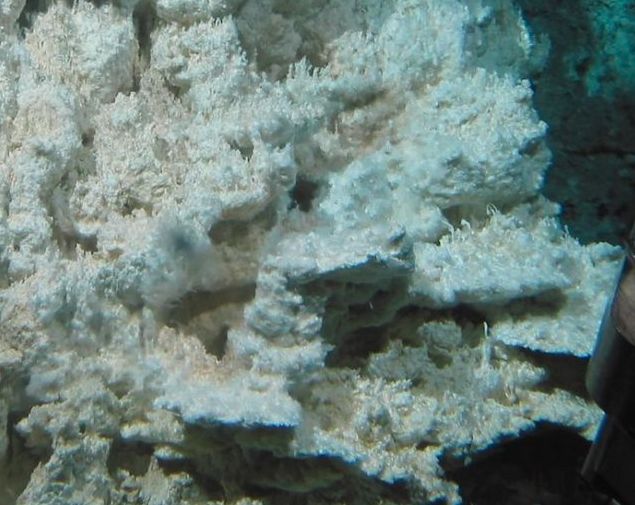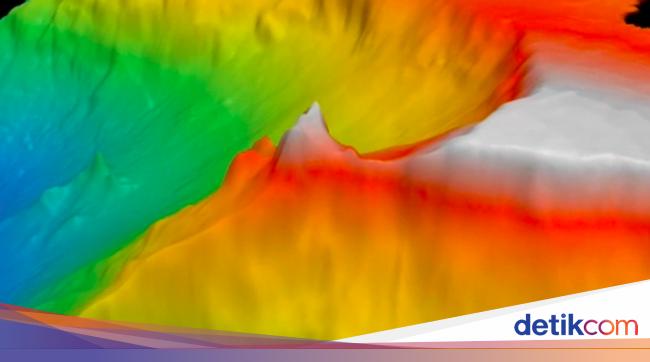Jakarta –
Near the top of the seamount to the west of the Mid-Atlantic Ridge, there is a view of a jagged tower-like structure rising out of the darkness.
Not just one, but a large group of structures like this, the size of a city, hidden deep in the ocean. The height of the structures range from small piles the size of toadstools to massive monoliths 60 meters high.
Discovered by scientists in 2000, at more than 700 meters below the surface, the Lost City Hydrothermal Field is the longest-lived vent environment known to exist in the oceans. Nothing else like it has ever been found.
For at least 120,000 years and possibly longer, the uplifted mantle over this part of the ‘lost city’ has reacted with seawater to send hydrogen, methane and other dissolved gases out to sea.
|
Foto: Washington University
|
Saving life
In the vents, the hydrocarbons feed a new microbial community that lives and takes refuge within them, even in the absence of oxygen.
Quoted from Science Alert, this structure that spews gas as hot as 40 degrees Celsius is home to many snails and other crustaceans. Larger animals such as crabs, shrimp, sea urchins and eels are rare here, but still present.
Despite the extreme nature of the environment, this area appears to be teeming with life. Researchers think the Lost City Hydrothermal Field deserves attention and protection.
Other hydrothermal fields like this one may exist elsewhere in the world’s oceans. However, this area was the only remotely researchable area that could be found so far.
The hydrocarbons produced by these ‘lost city’ vents were not formed from atmospheric carbon dioxide or sunlight, but by chemical reactions on the deep ocean floor.
Since hydrocarbons are the building blocks of life, this opens up the possibility that life on Earth originated in habitats like these. And maybe, not only happening on our own planet.
“This is an example of the kind of ecosystem that could be active on Enceladus or Europa right now,” said microbiologist William Brazelton, referring to Saturn’s and Jupiter’s moons. “And maybe Mars in the past,” he continued.
The tallest monolith is named Poseidon, after the Greek god of the sea, and is over 60 meters high. Meanwhile, just northeast of the tower, is a cliffside with brief bursts of activity.
 Foto: Washington University Foto: Washington University |
Threatened to be lost
Unfortunately, scientists aren’t the only ones intrigued by the unusual terrain. In 2018, it was announced Poland had won the rights to mine the deep sea around The Lost City.
While there are no valuable resources to be dredged up in the thermal field itself, the destruction of the surrounding environment can have unintended consequences.
Scientists warn any burst or discharge, triggered by mining, could easily wipe out the extraordinary habitat.
Therefore, some experts are calling for the Lost City Hydrothermal Field to be registered as a UNESCO World Heritage site to protect this natural wonder before it is too late.
For tens of thousands of years, the Lost City has stood as a testament to the eternal power of life. Scientists worry that human activity will damage and destroy it.
Watch Video “A Closer Look at Malakit, the World Cup Trophy Stone“
[Gambas:Video 20detik]
(rns/afr)


